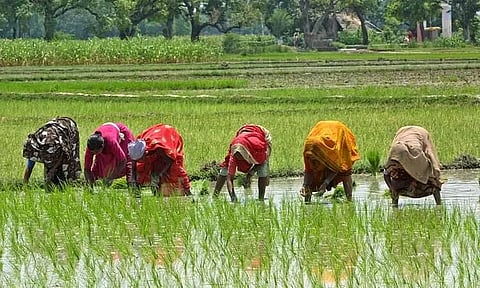
- Home
- Live Blog
- Breaking News
- Top Headlines
- Cities
- NE News
- Sentinel Media
- Sports
- Education
- Jobs

New Delhi: Government data on the Centre's flagship scheme PM-Kisan shows that almost one-fourth of the beneficiaries among landholder farmers in the country are women with Northeastern states and Kerala taking lead in filling the gap of gender disparities.
The most dominant agricultural state – Punjab – is at the bottom with women beneficiaries accounting for the lowest percentage at 0.003%.
Only 61 out of 23.28 lakh beneficiaries in the state are women.
In seven states and Union Territories including Mizoram, Puducherry, Andaman & Nicobar Islands, Rajasthan, Andhra Pradesh, Assam and Tamil Nadu women accounted a total of 30%-40% beneficiaries, which is more than the national average.
The nationwide figures 2.46 crores as women beneficiaries while 7.70 crores are men.
The PM-Kisan scheme launched in February last year was initially meant for only marginal and small farmers having land holdings up to 2 hectares.
The figures on women beneficiaries are a part of the response of agricultural ministry to a wide-ranging RTI application filed by human rights activist Venkatesh Nayak.
The RTI also shows that there is no provision for a separate category of 'persons with disabilities' under PM-Kisan scheme.
The Northeastern states have shown a successful bridging of gender disparity, while big states like Uttar Pradesh, Maharashtra and Bihar are lagging behind.
Out of 1.64 lakh beneficiaries in Meghalaya, 63.51% are women. The women not only outnumber men in Meghalaya but also has the highest percentage of women beneficiaries among all states and Union Territories.
In Nagaland (52.61%), Manipur (54.35%) and Arunachal Pradesh (51.98%) making women accounting more than 50% of the beneficiaries.
Lakshadeep also has women who make up a significant 49.41% of the total 1787 beneficiaries. Among other states, Kerala is the only one that accounts for over 40% of women beneficiaries.
There are 11 states and Union Territories including Uttar Pradesh and Maharashtra that have less than 20% women beneficiaries.